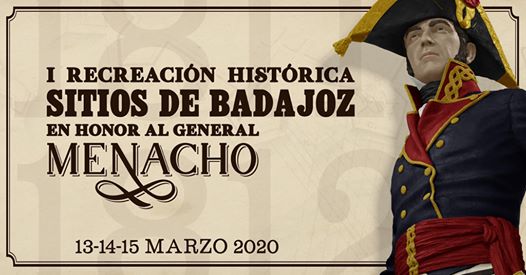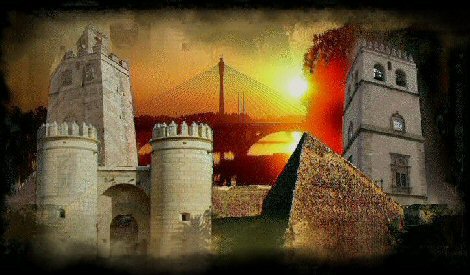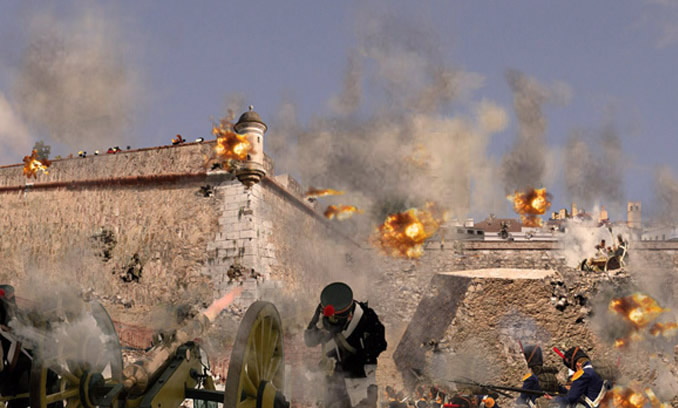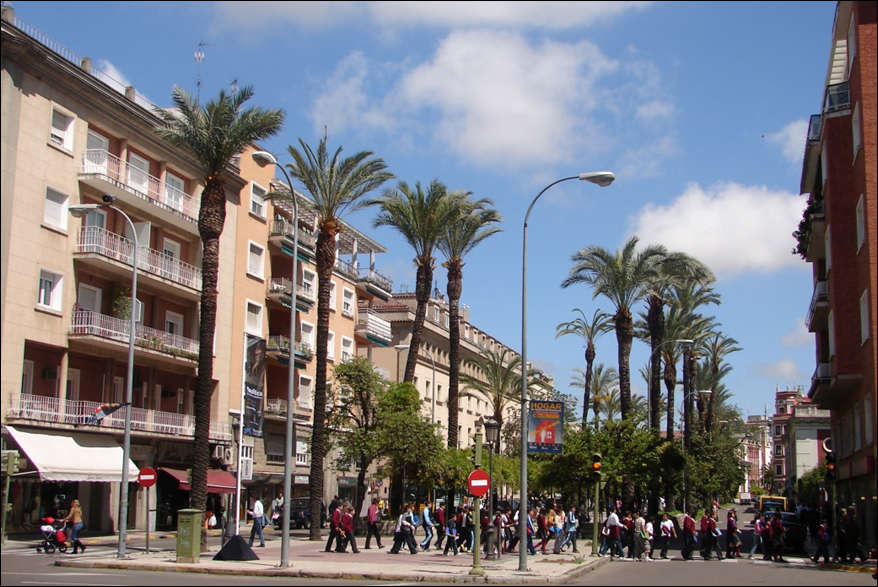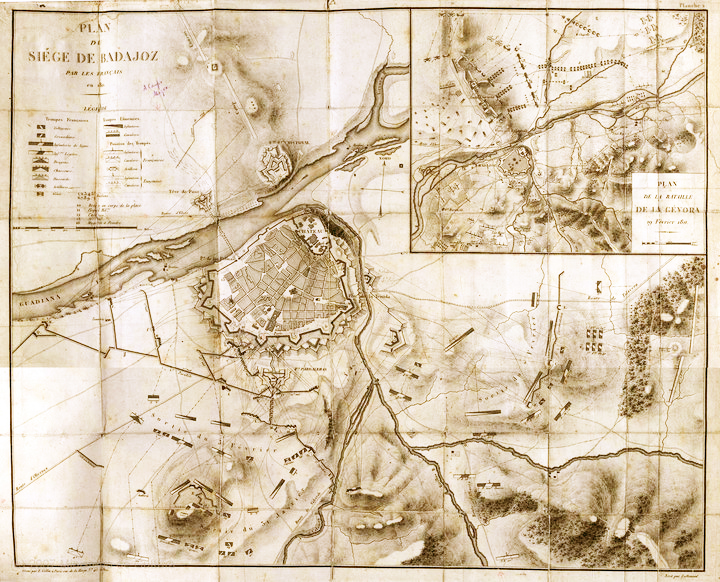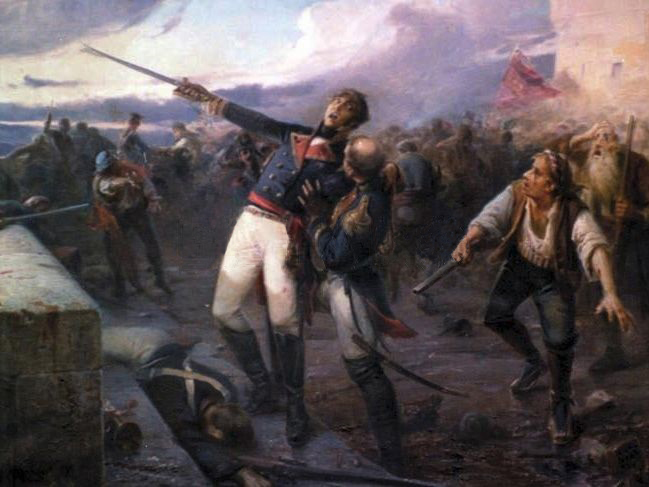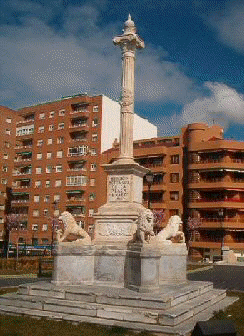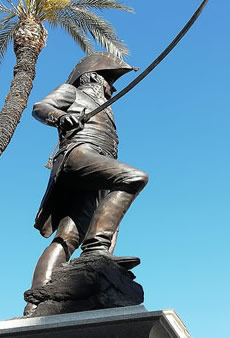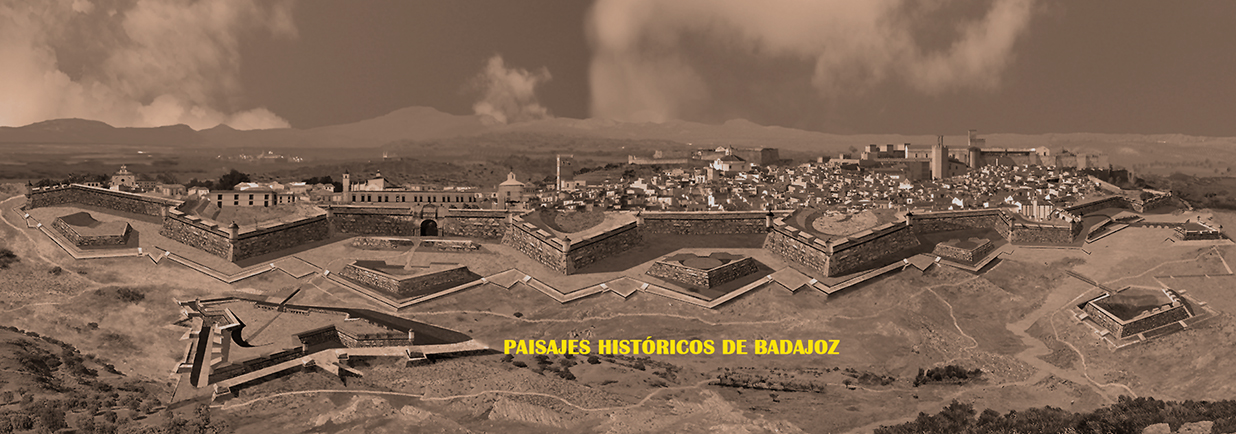FIRST SIEGE
OR STORMING OF BADAJOZ
Marshal Soult was then able to focus on the conquest of Badajoz, so on January 26th he ordered to start trench work, in order to attack the square from the south from three positions that, starting from the left bank of the Guadiana, Cerro del Viento and Valverde's way, they were to converge on the curtain of union between the bastions of San Juan and Santiago.
Immediately the first trenches began to open and in a few days, several batteries were located to the left of the Guadiana. The defense of the square was commanded by the Marshal de Campo D. Rafael Menacho, who did not remain inactive in the face of the blockade, deciding to harass the French with almost daily departures, in which he attacks the works and batteries that Soult tries to install, increasingly close to the glacis of fortification.
On 28 January, 54 French cannons begin bombing the Fort of Pardaleras. The days later Menacho at about four o'clock in the afternoon, he ordered the departure of the Seville Regiment, which was supported by 4 battalions and 2 cavalry squadrons, causing extensive destruction and heavy casualties to the enemy. The infantry takes the trench at bayonet point and on the right flank, the cavalry that had come out Puerta Palmas, followed by the covered path departing to the road of Olivenza, which crosses galloping, to charge violently against the batteries of the Cerro of the Wind, destroying the entire post and killing the Head of the Cazin Engineers Battalion and causing 200 casualties to the enemy.
Faced with the proximity of General Girand's troops, who came to the aid of the detachment, the Spaniards retreat to the protection of the square, covered by the fire of the fort of Pardaleras, welcoming to Badajoz by Puerta Pilar.
With forces reduced to the garrison enclosed in the square, completely blocked and isolated, all hopes were entrusted to their tenacious Governor, determined to bury their walls among the ruins of their walls, rather than submit to the French.
On 6 February, General Mendizábal advanced on Badajoz, succeeding in rejecting the French cavalry that went out to meet him. Forcing the French fence managed to enter Badajoz. With this operation the garrison of the square was reinforced considered, reaching for this, a total of 17,000 men.
But the city had neither the capacity nor the resources to host such a large troop, so Mendizabal decided to cross the Guadianae and camp between the fort of San Cristobal and the elevations of Santa Engracia. He left a part of his army in Badajoz, putting the number of defenders at 9,000 men, with an endowment of 170 pieces of artillery.
After Mendizábal's army in St Engracia was defeated, Marshal Soult sends a parliamentarian to Badajoz to negotiate his surrender, but Menacho refuses to receive him, and urges the garrison to resist within the city. If the enemy can break through the walls, they'll erect barricades, dig ditches in the streets, and open splinters in the houses.
The fort of Pardaleras is taken by the French on the night of 11 February, although the next day the artillery of the square reduced it to rubble after heavy bombardment. The following days are used to carry out successive exits from the besieged and continuous French bombardments, without significant progress.
The French batteries finally manage to open a gap of about 30 meters in the curtain located between the bastions of Santiago and San Juan, as well as in part of their flanks. |

Croquis del 1er. Sitio de Badajoz sobre la ciudad actual. |
